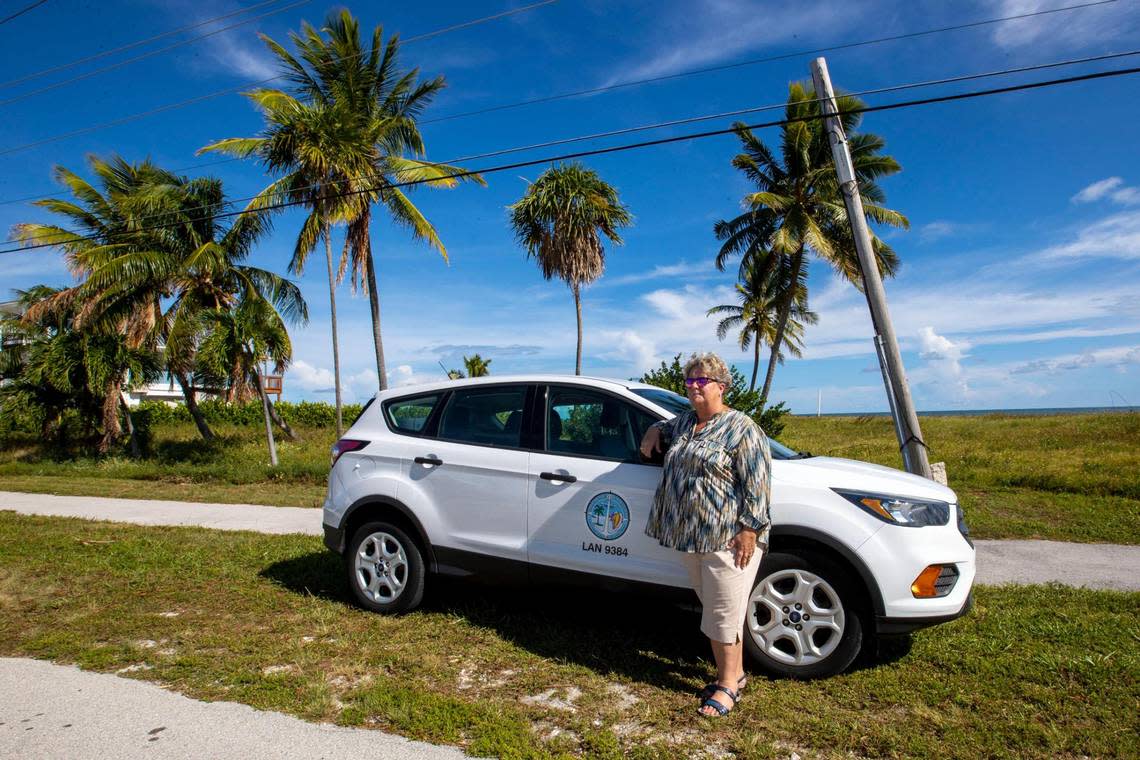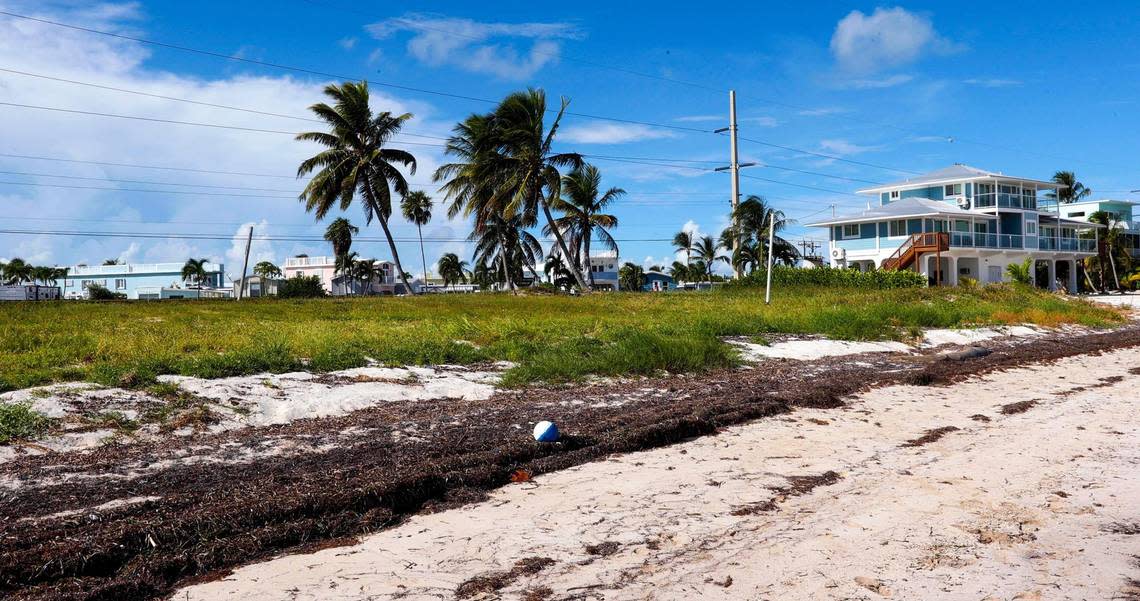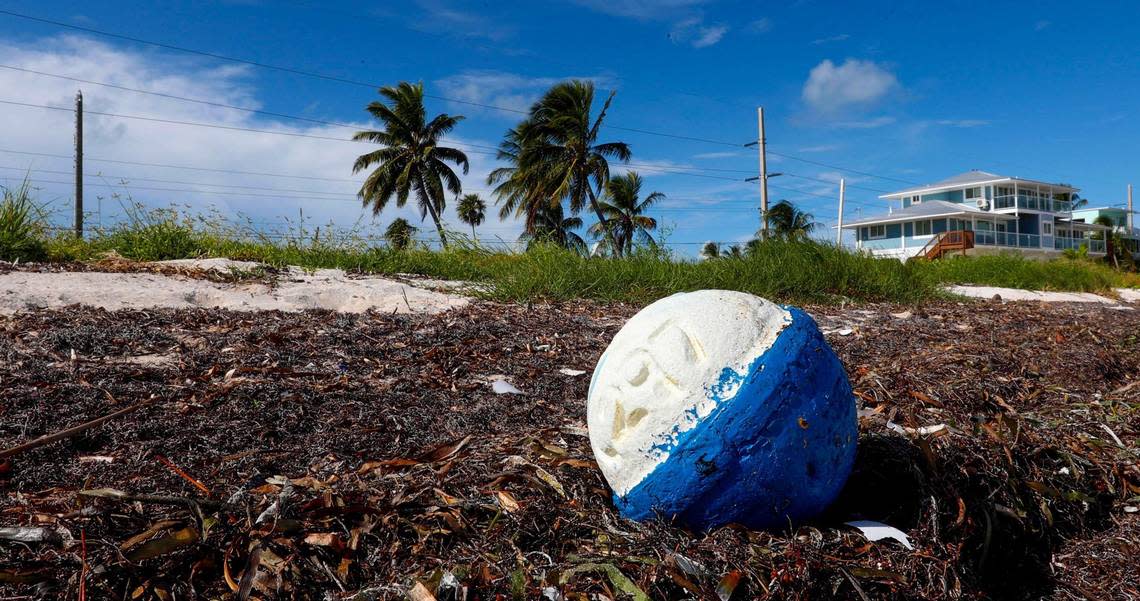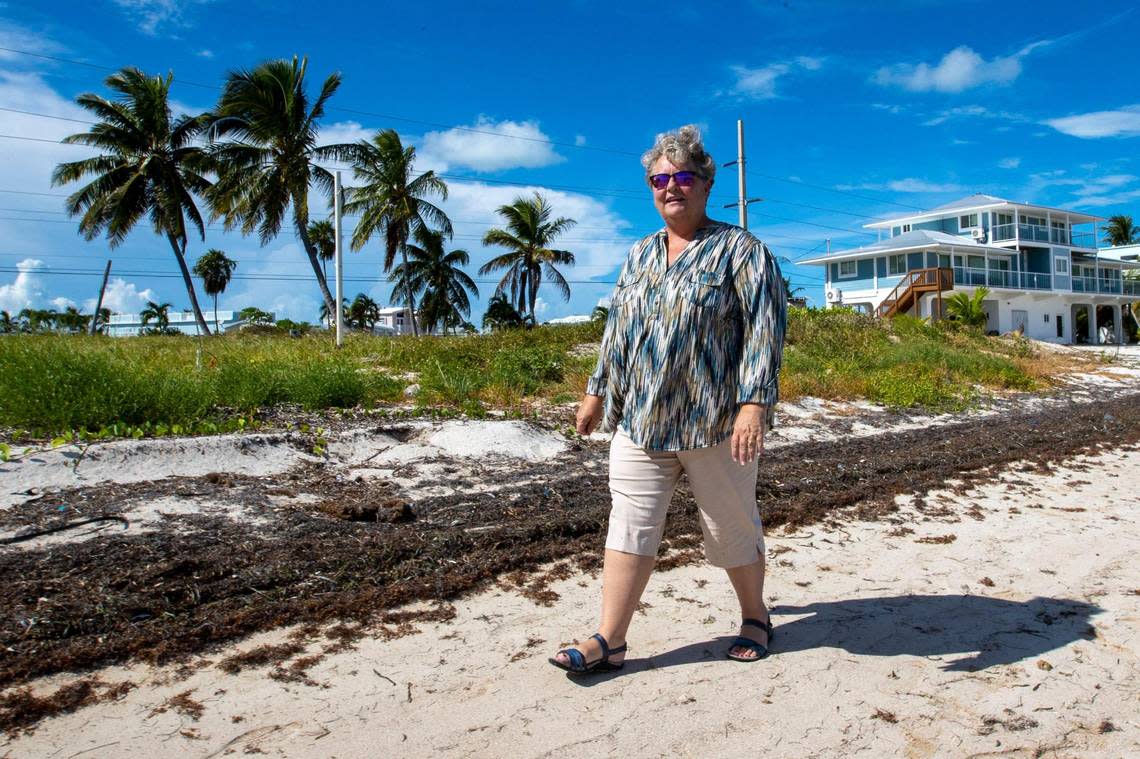Buyouts take flood-prone Keys properties off the market. There are more sellers waiting
As sea levels rise, low-lying coastal communities have two choices. They can build higher or back away from the water.
In the Florida Keys, geography has all but made that choice for them.
For the rest of the state, and the country for that matter, the thought of retreating from rising seas is some far-off concept and one many politicians avoid, wary of the ripple effects on real estate and the economy. But in the Keys, it’s become necessary — and official government policy.
Monroe County retooled one of its government arms to focus on buying properties with high flood risk from willing sellers using federal funding. They’ve bought nine, and plan to buy at least 12 more. Structures on the lots are demolished and the sites are returned to nature, allowing the county to focus its limited resources on protecting residents in safer spots.
“We’re trying to adapt. We’re not able to adapt all areas though, so long-term we may need those buyouts,” said Rhonda Haag, the county’s chief resilience officer.
Few places in Florida have more to lose from sea level rise than the Keys. Sea rise is a game of inches, and Monroe County has fewer to spare than almost anyone in the state.
That point was underlined five years ago, when Hurricane Irma came roaring ashore as a Category 4 hurricane. It destroyed homes, flipped boats and even disturbed the rest of a long-buried resident.
It also revealed how vulnerable many homes and businesses on the island chain are. So when the federal government threw hundreds of millions of dollars at Florida for storm recovery, Monroe County launched its largest ever home buyout program, with the explicit intention of moving people away from flood-prone areas and into safer ones.

“If we can transfer those lots to areas that aren’t as vulnerable, everyone will be safer,” said Haag.
Haag is charged with helping the county adapt to climate change. Part of that job includes advocating for local, state and federal money to build higher roads, flood-proof important buildings and help residents elevate their homes. But she hasn’t been shy about the other reality of her role, that people can’t live in every part of the Keys forever.
And residents tend to agree. When the county opened applications to buy out properties that suffered from repeated flooding, the list swelled to a high of 80 applicants at one point.
Five years later, Monroe has already bought out nine of those properties with another 12 on the way. The deadline to buy and demolish all properties is June 2023.
“We already have some offers out on the last ones. We’re moving as fast as we can,” said Cynthia Guerra, acquisition manager for Monroe County.
A tough sell
With a waiting list of 80, buying out only 22 properties five years after a storm doesn’t seem like much of an accomplishment, but in the world of government buyouts, it’s practically a speed record. And Monroe has a limited amount of land to develop or redevelop.
Academic studies on buyouts show it takes around six years from the time of a disaster to buy out a single property. Monroe signed up for the federal program in 2019 and closed on the first property in May 2022.
That’s a long time to ask anyone to wait to sell their home, especially if Hurricane Irma rendered it unlivable. There were other challenges as well — the biggest being the exploding housing market. While real estate prices soared, the state-funded offer to buy out homes was based on pre-Irma home values from 2017. So the federal money didn’t go as far.
“That’s how we lost a lot of our original 62 applicants. By the time we were in a position to make offers, the prices had just gotten away from us,” Guerra said. “It wasn’t a Monroe problem, it was an everybody problem.”

That was the case for Kathy Reitzel, whose ground floor home on Big Pine Key was sloshed with six feet of storm surge. Irma also wrecked the hospital she worked at, leaving her with an 80-mile one-way commute from her temporary home on Big Coppitt to the hospital in Tavernier.
At first, Reitzel said she thought she could wait for a buyout. But then home prices soared, and she found out the nice high number she was quoted from Monroe County for her home didn’t include deductions for all the cash she got from her insurance company, FEMA and the Red Cross.
To Reitzel, the math didn’t add up. So she sold her property to a private party and moved to Arizona.
“I lost everything inside the house, a lifetime of books and furniture and kitchen stuff,” she said. “I ended up getting more money for the house than I put it on the market for.”
The state’s Department of Economic Opportunity, which oversees the program, did recognize this issue eventually and allowed municipalities to reappraise the properties and offer more cash. Guerra said some property values soared, like one spot that went from $115,000 to $206,000 and another from $221,000 to $263,000.
Climate as a priority
The Keys has a unique government board that few other counties do, called the Monroe County Land Authority. It’s run by the Monroe County Commission but is technically a separate entity, and it was originally set up to help regulate development in the one spot in the state where there is a cap on how much can be built.
But in the era of sea rise, the board has some new priorities. For the first time, the board is buying properties specifically because of their risk of sea level rise-induced flooding.
“There’s been debate back and forth, do you buy those properties and let it return to its natural state, or do you redo all the infrastructure and figure out how to make the neighborhood more resilient? Those are very hard policy questions,” said Christine Hurley, executive director of the land authority.

Either way, the land authority is involved.
The county’s multi-billion dollar project to raise roads above sea levels (and abandon some that aren’t financially viable to maintain) has also helped the land authority identify properties that may need to be purchased.
When the county identified areas it wants to protect, the land authority steps in to help buy property to install things like stormwater pumps or injection wells.
“We’re also involved when a decision is made not to invest in infrastructure,” she said.
This work began even before Irma hit, Hurley said. Monroe compiled a database of hundreds of people that needed help and would possibly be open to selling their homes. Once the programs started opening, county officials reached out to everyone on the list that would be eligible for grant funding.
As the applications started rolling in, Hurley noticed some patterns. A lot of the applications were from one specific neighborhood that experienced a lot of flooding. So her team went out and started making offers on vacant lots in the neighborhood.

“We really focused on that one particular area. You’ll notice how wet it is even on a dry day,” she said.
Monroe County’s aggressive approach is unusual in Florida, where retreat is a politically unpopular topic. But Hurley, and Monroe’s leadership, see this new strategy as an important step toward protecting residents from intensified flooding as sea levels rise.
“It’s important that structures that are not safe get eliminated from future flooding. It’s not fun for anyone, especially the people living in them,” she said.
